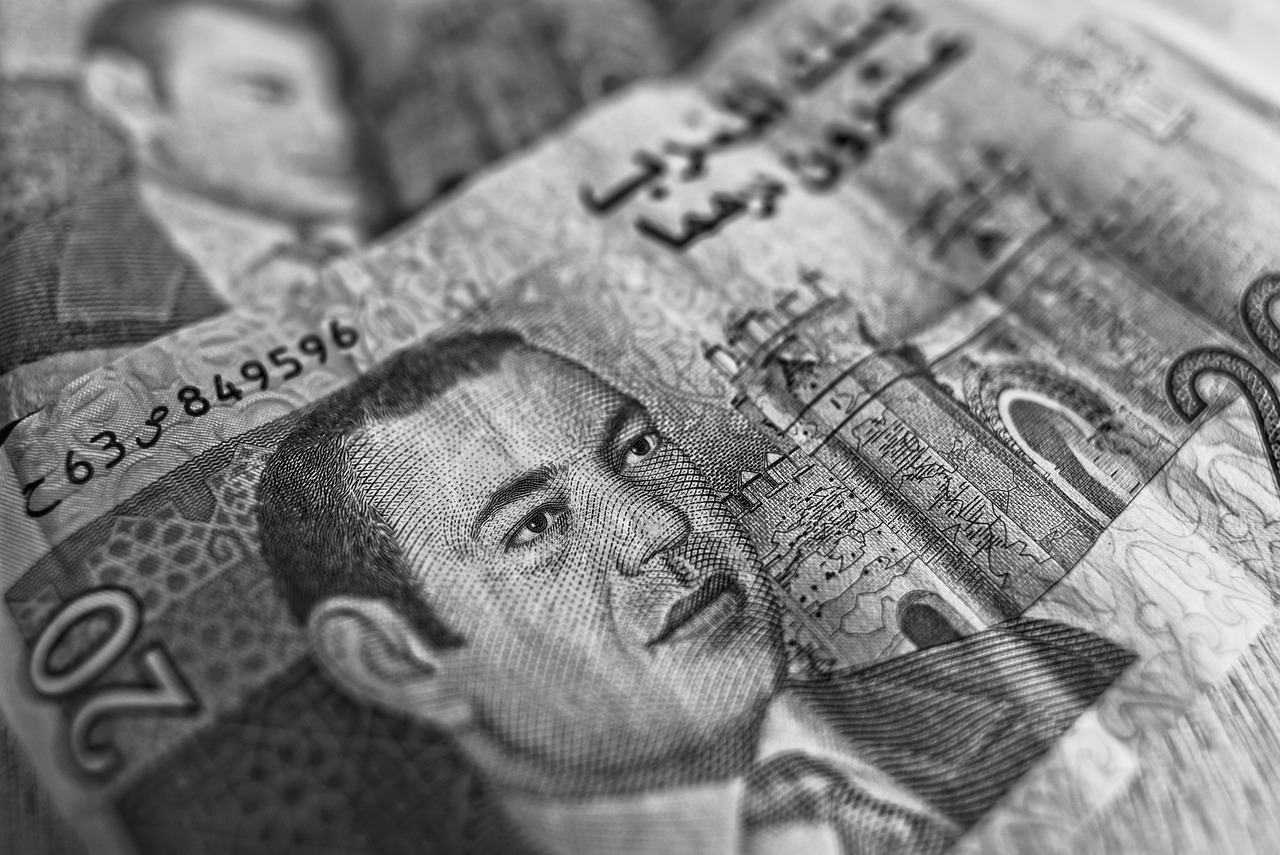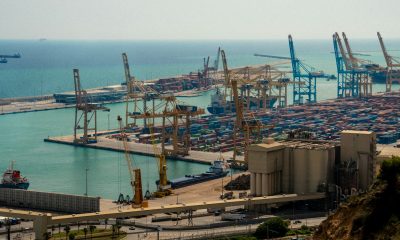Africa
Budget Deficit in Morocco: the Treasury Is in a Good Position
The Treasury would be able to meet its significant financing needs in 2023, which amounted to $20.6 billion (210 billion dirhams) at the end of February. Evidenced by its investments in the money market whose levels exceeded $4.9 billion (50 billion dirhams) on average during the month of March. The Treasury is expected to post a debt ratio of 70% in 2023. This ratio would have reached 66.7% in February.

The Treasury of Morocco should be able to control its budget in 2023. This is due to a significant improvement in indirect tax revenues, which account for 38% of the government’s revenue recovery. ICT and VAT were supported by price increases. As a result, ordinary revenues improved by 10.7% to $4.24 million (43.1 MMDH) over the same period.
Ordinary expenditure increased by 7.8% ($442.5 million (+4.5 billion dirhams)) and the ordinary balance stood at $777 million (-7.9 billion dirhams). The financing requirement increased to $1.74 billion (17.7 billion dirhams) (-$98.3 million (-1 billion dirhams) in end-February 2023, due to the reduction (-7 billion dirhams) in the stock of pending operations.
Read more about the budget deficit in Morocco and find the latest economic news in the world with the Born2Invest mobile app.
$21.3 million (217 MMDH) of gross financing requirement
Of this requirement, 96% was met on the domestic market, of which 24% was met through recourse to the domestic debt market. This important flow of domestic debt aims to meet the financing of the Treasury’s liabilities, which are expected to exceed $4.9 billion (50 billion dirhams) during March and April.
“According to our estimates, the Treasury’s gross financing requirement by the end of 2023 should be $21.3 million (217 MMDH). This is calculated through residual financing of the budget deficit as well as the arrears of the Treasury, estimated by the LF 2023 to be $5.4 million (55 MMDH), a cumulative residual of the remaining Treasury falls at the end of 2023 of $15.9 million (161.6 MMDH), including $15.3 million (155.5 MMDH) on the domestic market and $599.9 million (6.1 MMDH) on the external market”, explain the analysts of Attijari global research (AGR) in the Monthly budget focus of March.
It should be noted that according to the LF 2023, the money of the Kingdom should cover $5.7 billion (57.9 billion dirhams) of its gross financing need on the external market and the rest ($15.6 billion (158.7 billion dirhams)) on the domestic market. Following this logic, the monthly gross domestic financing requirement should stabilize at $1.56 billion (15.9 billion dirhams). This high level takes into account the realization of the totality of external financing budgeted by the LF 2023 at $5.9 billion (60 billion dirhams), reinforced by the realization of the last international outflow of 26 billion dirhams, according to analysts in this sense.
A manageable situation
In the absence of significant pressure on the State’s public finances, and taking into account the last international raising, the Treasury’s BDT supply on the auction market should remain under control during the next quarter. AGR’s experts remain confident that the Treasury will be able to meet its significant financing needs in 2023, i.e. more than $20.6 million (210 MMDH) at the end of February. This is evidenced by the levels of its money market investments, which exceeded $4.9 million (50 MMDH) on average during the month of March.
Moreover, the direction of rates in Morocco would be closely linked to BAM’s monetary policy as well as to the impact of inflation on the profitability requirements of investors. Recall that the AGR scenario calls for a continuation of BAM’s restrictive course in 2023. In light of the changes in budget items provided for in the 2023 Financial Law, the Treasury should keep its 2023E budget deficit under control at $6.46 million (65.7 MMDH), i.e. around 4.5% of GDP. The Treasury’s debt should continue its upward trend, exceeding $98.3 million (1 billion MDH), compared with $94 million (956 MMDH) in 2022.
In detail, domestic debt is expected to reach $74.6 million (760 MMDH) in 2023, up by 1.8% compared to its level at the end of 2022. The Treasury’s external debt is expected to increase by 25%, from $20.5 million (209 MMDH) in 2022 to $25.7 (262 MMDH) in 2023.
At the end of February, the overall debt would have reached $95.8 million (974 MMDH). The domestic component is estimated at $75 million (763 MMDH) against $2.06 million (211 MMDH) for the external component. The weight of external debt in the Treasury’s overall debt should be around 26% during 2023, in line with the reference benchmark of between 25% and 30%. At the origin, the high level of external financing provided by the LF 2023, is $5.9 million (60 MMDH). “Taking into account the growth forecasts of the LF for the year 2023 (+4.5%), the Treasury should post a debt ratio of 70% this year.
This ratio would have reached 66.7% in February,” is explained in this sense. The domestic debt would slow down to 52.3% in February before falling to 52.1% at the end of 2023. The external debt rate should accelerate from 15.3% at the end of 2022 to 18% in 2023. This would have stood at 14.4% at the end of February.
__
(Featured image by MabelAmber via Pixabay)
DISCLAIMER: This article was written by a third party contributor and does not reflect the opinion of Born2Invest, its management, staff or its associates. Please review our disclaimer for more information.
This article may include forward-looking statements. These forward-looking statements generally are identified by the words “believe,” “project,” “estimate,” “become,” “plan,” “will,” and similar expressions. These forward-looking statements involve known and unknown risks as well as uncertainties, including those discussed in the following cautionary statements and elsewhere in this article and on this site. Although the Company may believe that its expectations are based on reasonable assumptions, the actual results that the Company may achieve may differ materially from any forward-looking statements, which reflect the opinions of the management of the Company only as of the date hereof. Additionally, please make sure to read these important disclosures.
First published in LES ECO.ma, a third-party contributor translated and adapted the article from the original. In case of discrepancy, the original will prevail.
Although we made reasonable efforts to provide accurate translations, some parts may be incorrect. Born2Invest assumes no responsibility for errors, omissions or ambiguities in the translations provided on this website. Any person or entity relying on translated content does so at their own risk. Born2Invest is not responsible for losses caused by such reliance on the accuracy or reliability of translated information. If you wish to report an error or inaccuracy in the translation, we encourage you to contact us.

-

 Markets6 days ago
Markets6 days agoMixed Market Trends as Global Coffee Growing Conditions Improve
-

 Africa2 weeks ago
Africa2 weeks agoForeign Investor Activity in Morocco’s Equity Market in 2024
-

 Fintech4 days ago
Fintech4 days agoPayPal Under Fire: Excessive Data Collection and Privacy Concerns in Advertising
-

 Biotech2 weeks ago
Biotech2 weeks agoJohnson & Johnson’s Tecvayli Combo Shows Breakthrough Results in Multiple Myeloma

























